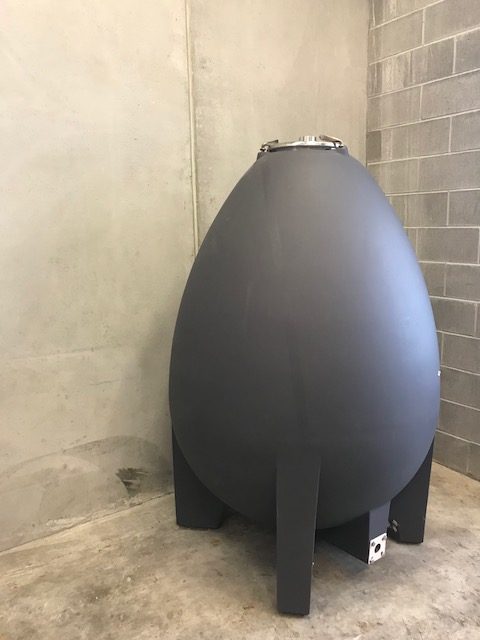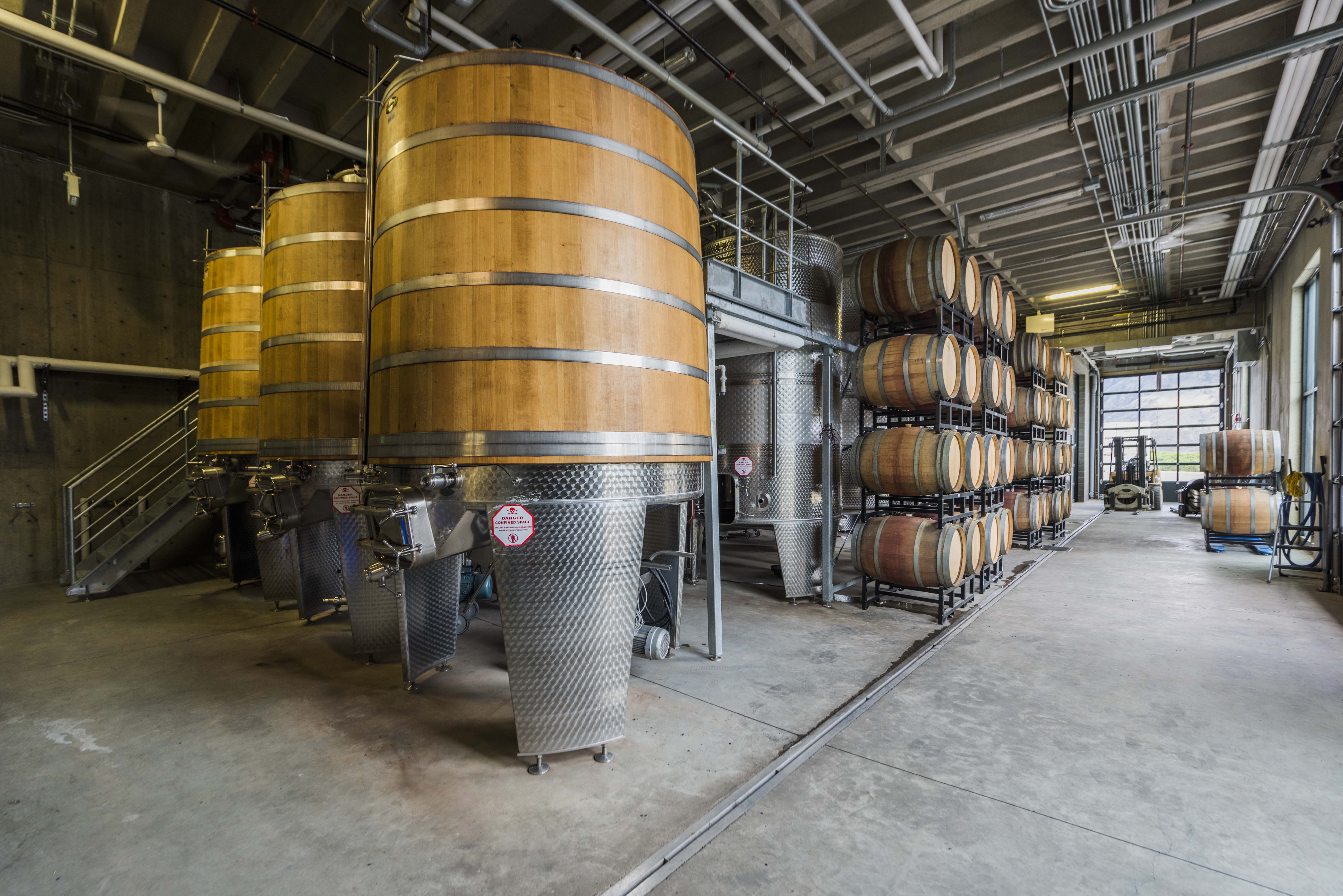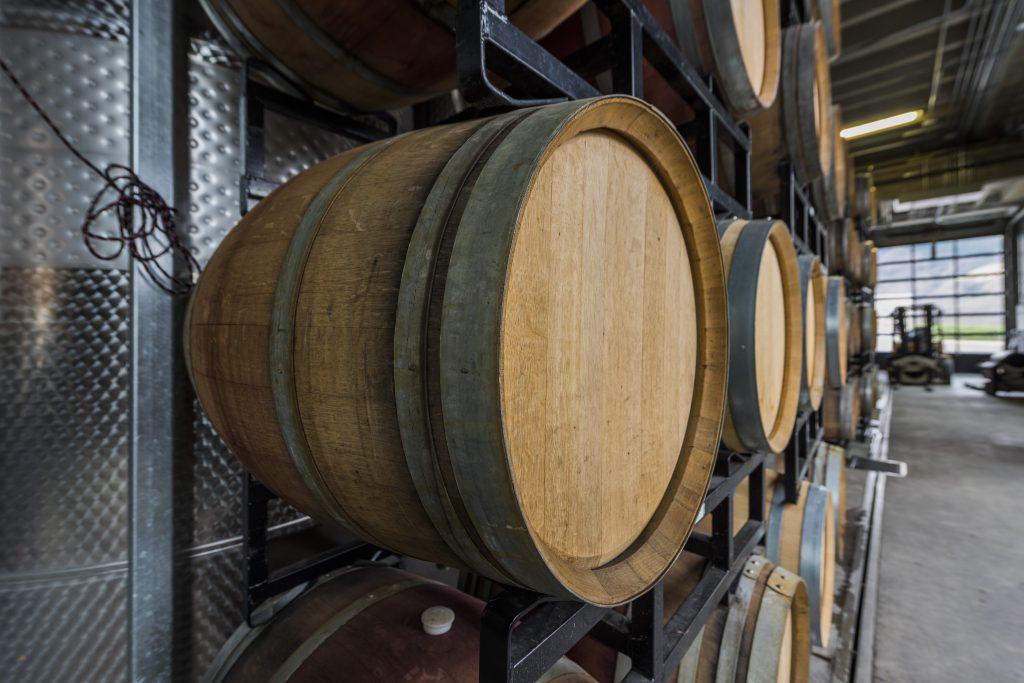Welcome to the Cellar
We are excited to announce that we have a new addition in the cellar – a new toy for our winemaker, Galen Barnhardt, to play with. We have recently purchased a 660L Nomblot concrete egg fermenter which will be used to make white wines. We’re certainly excited to see and taste the wines produced in our new concrete egg!
Oak & Stainless Steel
In red wines, barrel aging offers controlled oxidation. This gradual process can help to decrease the astringency while also increasing the stability and color of the wine. It allows the fruit aromas to evolve into more complex ones. The oak itself also adds to the flavour and texture to both white and red wines. Notes of vanilla, tea or tobacco, are common flavours, in addition to sweet and toasty aromas.
The use of stainless-steel tanks, popular for both red and white wine fermentation, became a widespread choice as they create a clean and controlled way of fermenting and storing wine. Stainless steel allows winemakers to produce fresh wines with more fruit and acidity.

Concrete Tanks
Concrete tanks are heavy, thick-walled vessels that come in many shapes and sizes, such as ovals, cubes, and pyramids. The use of concrete has been used in winemaking since the 19th century, but the egg shape is new.
So what’s the advantage of having a giant egg in the color of your choice, apart from its just looking really cool? Three main things: micro-oxygenation, circulation, and flavor neutrality.
Evaporation loss is quite small, as is temperature fluctuation. Unlike stainless steel, the inner walls of concrete tanks aren’t uniform. They are porous, with thousands of tiny pockets that trap air. This allows for minimal air contact with the wine.
If you were to look into a tank of fermenting grape juice and you would see plenty of motion. In a concrete fermentation tank, the juice moves in a swirling motion. This movement circles from top to bottom which naturally stirs the sediment to provide complexity. As there are no “dead corners” where the juice may sit still, there is an improved composition of the liquid.
Concrete tanks don’t give off any additional flavor either, which makes them ideal for winemakers who want to reflect the true terroir of the grapes in the wine. Therefore, wines created in concrete tanks tend to be bright and fruit-forward, with excellent texture and minerality.


